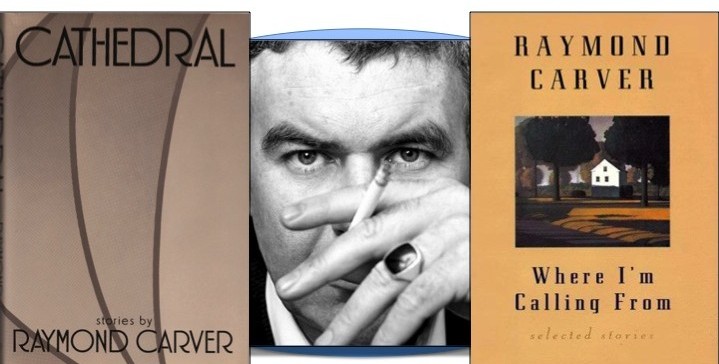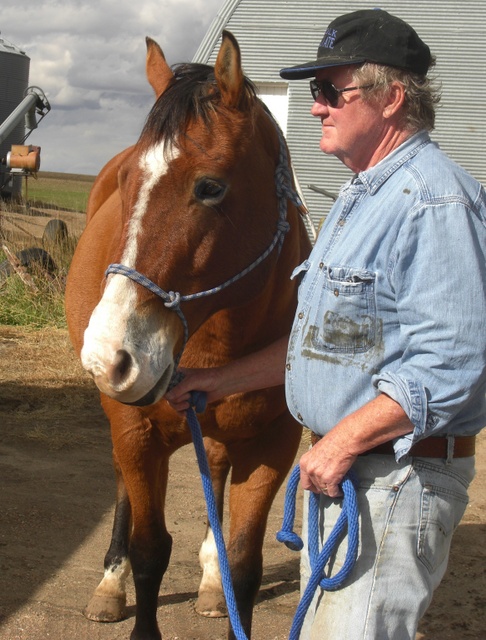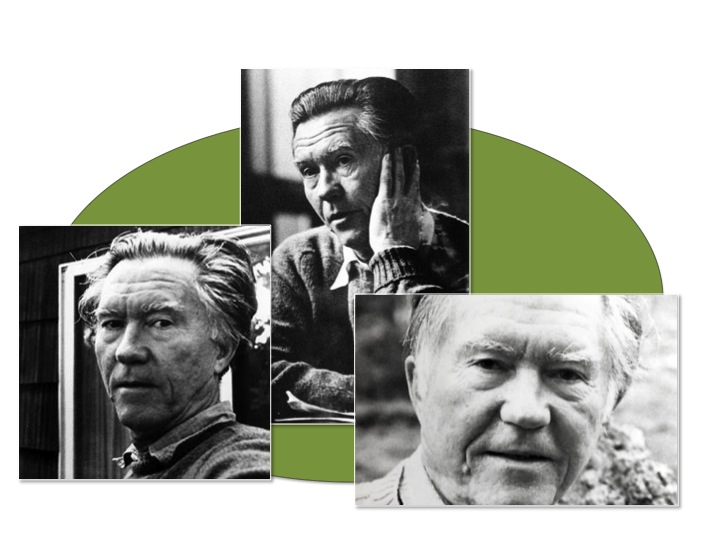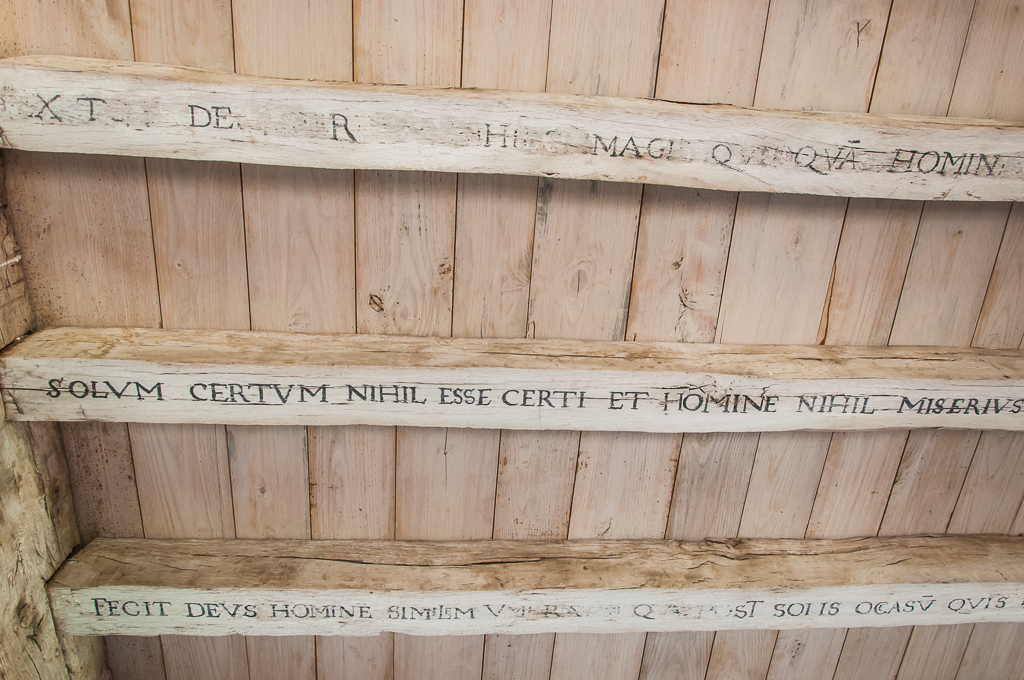It was in Iowa City where I first met Ray Carver. He was then teaching at the Writer’s Workshop. I don’t recall what I was doing there, maybe being interviewed for the kind of job Ray had: you teach one semester or two, and then someone takes your place. (In fact I did that a few years later.) Or maybe I was just passing through to see my friends Marvin Bell and Jack Leggett. Speak memory?
Somehow, some place, for some reason, Ray asked if I’d drive him to the Iowa City airport. Sure. By this time I’d read a number his stories in Esquire (not knowing then about the controversial cuts that had been made by Gordon Lish, the fiction editor there). In those days Ray was drinking. He drank on the way to the airport, offering me a pull. Thanks, but no thanks. Keep the bottle for me, he said as he got out of the car. Sure.
In the car I talked; Ray did not. Or at least not much. I told him what I thought about his fiction, especially Fat, using the two terms that in those days were applied to his work: “K Mart Fiction” and “Minimalist Fiction,” what Granta called “dirty realists”—that’s those Brits for you. Reading his stories, I said, he had taught me a few things. You don’t need much teaching, he said, and tried the bottle on me a second time. I’ll put it on your desk in EPB, I said. Thanks, he said.
I also asked where he was going. It was probably a Wednesday afternoon. You could teach either a Monday-Wednesday schedule at the workshop or a Tuesday-Thursday schedule. Ray had apparently picked Monday-Wednesday. But now that I think about it, he might have made special arrangements to teach Monday-Tuesday for reasons that I would learn later had to do with his flight that day.
Chicago, he said. Chicago? He said nothing more.
Frank Martin uncrosses his arms and takes a puff on the cigar. He lets the smoke carry out of his mouth. Then he raises his chin toward the hill and says, “Jack London used to have a big place on the other side of this valley. Right over there behind that green hill you’re looking at. But alcohol killed him. Let that be a lesson to you. He was a better man than any of us. But he couldn’t handle the stuff, either.” Frank Martin looks at what’s left of his cigar. It’s gone out. He tosses it into the bucket. “You guys want to read something while you’re here, read that book of his, The Call of the Wild. You know the one I’m talking about? We have it inside if you want to read something. It’s about this animal that’s half dog and half wolf. End of sermon,” he says, and then hitches his pants up and tugs his sweater down. ‘I’m going inside,” he says. “See you at lunch.”
This passage is from Ray Carver’s story “Where I’m Calling From.” I will explain later.
The next time Ray Carver—in fact the next two times—came into my life were through his editors, one being Michel Curtis, the fiction editor of the Atlantic Monthly, and the aforementioned Gordon Lish of Esquire. In what order is also now lost to my apparently speechless memory.
At Washington College where I once taught we would bring in poets and writers for the students, but I thought a good literary editor might helpful as well. That had been my case when I was a student and the University of Arkansas MFA program brought to campus Ted Soloratoff of New American Review. In was in this spirit that I had invited Mike Curtis, fiction editor of the Atlantic.
In advance of his arrival, he sent me a copy of the magazine in which Ray’s new story, “Cathedral,” had been published. It was not at all like the Ray Carver stories I had read in Esquire: It was long, very long, and there was nothing K-Mart about it. But there was something else: it rambled as a matter of design. Not shamble, because there was nothing awkward or clumsy about its pace. If Carver’s Esquire stories were tight in their telling, this one was loose. But in its fashion, beautifully telling.
At lunch that day with Curtis and students I thanked him for the Atlantic and said how much I enjoyed “Cathedral,” but that it was long for a Carver story. It is neither long, nor short, Mike said, it is the right length for the story. His answer seemed blunt, as if there were reasons behind it I did not understand. Which was true.
We then talked about length (as opposed to brevity) in short fiction, with Melville being part of the conversation, along with Katherine Anne Porter and J.D. Salinger. But I kept thinking how quickly Curtis had made his point about Carver. I refrained from asking about the absence of the K Mart stores in “Cathedral,” much less “dirty realism.”
It was a few years later (or earlier?) that also in the spirit of bringing an editor to campus that I invited Gordon Lish, the fiction editor of Esquire. The students at Washington College had a literary house for themselves where they would give readings, host visiting writers, hold a salon among themselves, publish literary magazines and, using a warren of rooms, write novels and stories and poems and plays. All through the house were framed posters of those literary folk who had stopped by: Edward Albee, Gwendolyn Brooks, William Stafford, Allen Ginsberg, Toni Morrison, Joseph Brodsky, John Barth , Katherine Ann Porter, Anthony Burgess, Lawrence Ferlinghetti, Richard Wilbur, John Ashbery, Diane Wakoski, and more. The Washington Post called their house the Carnegie Hall of Literary Readings. They put it on a T-shirt.
It was the custom of the literary students who inhabited the house to decide if the visitors were worthy or not. If not, the poster would be hung upside down. Very few were, but apparently they thought Gordon’s visit (consisting of conferences, classes, and a public lecture) was so poor they turned his poster to the wall. Done.
Well, not quite done. Some of the students pointed out that while Lish was of little or no help to them with their writing, through him, Ray Carver had been. Not that I knew this until I was told later that everywhere Gordon went on our campus (to a student reception for him; in classes; in the conferences he had with students over their work), he brought up Ray Carver: What a fine writer Carver was and that one way to develop as a writer was to read with a writer’s eye authors you admire. Ray Carver, Gordon Lish had asserted, will teach you by what he has written. Type out passages you like from his stories, Gordon told them, and he will teach you more than your creative writing teacher (that would have been me).
After some debate, and after the students began reading Carver, a new vote was taken and Gordon got turned around. Still upside down, but at least no longer a blank on the wall.
What those students learned from Ray Carver was probably what I had learned: his restraint in describing or delineating a character and in this way giving the character a chance of his own; his candor about the grim faults of those he had created; his half open-ended endings, as if a door is left ajar. I owe him.
The second time I met Ray was with Jack Barth at a bar in Baltimore to get something to eat before Ray was to give a reading at Johns Hopkins that evening. Ray was not drinking, Jack said by way of introduction. I nodded; Ray nodded back. I wondered if he had remembered me from Iowa City. I didn’t mention it; nor did he. We talked books and writers. I mentioned Ray’s use of Jack London in “Where I’m Calling From.” He told me had learned a lot from London, but not about drinking. That he had learned on his own.
In the pause among us, I asked Barth how he learned to be a writer. I was a failure at being a jazz musician, he said. And you? he asked me. In fact it was from Jack London, I said. How so, asked Ray?
I read “To Build A Fire” for a university course in American Literature and when I went to class the professor explained that the story was a Man-Against-Nature story. He explained that for fifty minutes. There are Man-Against-Man, Man-Against-Society, and Man-Against-Nature stories. The next class the professor explained that sometimes nature wins, sometimes man wins…and so on…for another fifty minutes.
Ray said he’d heard that lecture as well.
Somewhere in haze of those hundred minutes, I said, I found myself thinking how much I liked the writing in the story. The language of it. Shouldn’t that count for something in an English class? Not that I knew then what could be said about the language. But when I went back to my dorm room and read the story again the writing seemed splendid in ways I could not name so that in order (I now suppose) to understand what I admired, I propped the book up beside the portable Royal type writer my mother had given me before I went away to school and typed out the first long paragraph which I then memorized:
Day had broken cold and gray, exceedingly cold and gray, when the man turned aside from the main Yukon trail and climbed the high earth-bank, where a dim and little-traveled trail led eastward through the fat spruce timberland. It was a steep bank, and he paused for breath at the top, excusing the act to himself by looking at his watch. It was nine o’clock. There was no sun nor hint of sun, though there was not a cloud in the sky. It was a clear day, and yet there seemed an intangible pall over the face of things, a subtle gloom that made the day dark, and that was due to the absence of sun….
Before I could finish, Ray took over:
This fact did not worry the man. He was used to the lack of sun. It had been days since he had seen the sun, and he knew that a few more days must pass before that cheerful orb, due south, would just peep above the sky-line and dip immediately from view.
He had been there before.
It was later, and it was either Jack Leggett or Connie Brothers at the Iowa Writers Workshop, who told me that Ray had been flying back and forth between a college teaching job in California only to fly back later in the week to take up his position at Iowa. Not that anybody knew the story at the time. Or maybe they did.
—Robert Day
.
Robert Day is a frequent NC contributor. His most recent book is Where I Am Now, a collection of short fiction published by the University of Missouri-Kansas City BookMark Press. Booklist wrote: “Day’s smart and lovely writing effortlessly animates his characters, hinting at their secrets and coyly dangling a glimpse of rich and story-filled lives in front of his readers.” And Publisher’s Weekly observed: “Day’s prose feels fresh and compelling making for warmly appealing stories.”










 Dave Smith via The Poetry Foundation
Dave Smith via The Poetry Foundation